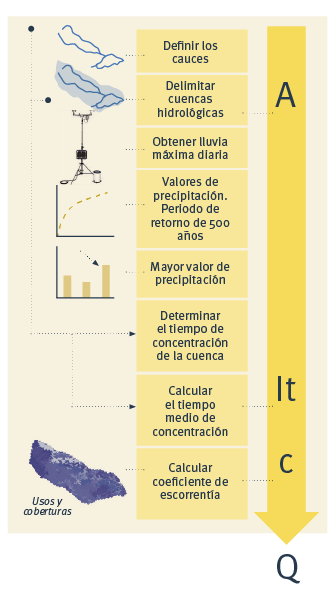Aims
Water regulation is one of the most important services provided to society by mountain ecosystems. Actions in the territory that cause changes in land uses imply variations in the capacity of the territory to regulate the water from precipitation. The aim of this methodology is to evaluate this regulation capacity by Sierra Nevada ecosystems.

Method and effort
To evaluate the way in which this service varies throughout the territory and over time, we use the rational method, which determines the instantaneous maximum discharge flow (Q). This flow depends on three major factors: precipitation intensity (It); the area of the catchment basin (A), and the runoff coefficient (C).
Q = It x A x C
The first ones, in principle, cannot be altered by humans. However, the runoff depends on the land use and plant cover. Thus, we measure the capacity of the different land uses to diminish maximum flows as a proxy of the ecosystem service of water-resource regulation, according to the steps depicted in the figure.

Periodicity
The periodicity of this methodology is determined by the strong dynamic component implicit in water regulation by the territory.
Results
References
Chow, V., Maidment, D. R., y Mays, L. W. 1994. Hidrología aplicada. Mc Graw Hill. 580 pp.
Moreno Llorca, R., Navarro González, I. y Bonet García, F.J. 2011. Evolution of ecosystem services in intensive and extensive Agricultural Systems. En: 12th European Ecological Federation Congress. Responding to rapid environmental change. Ávila, Sep 2011